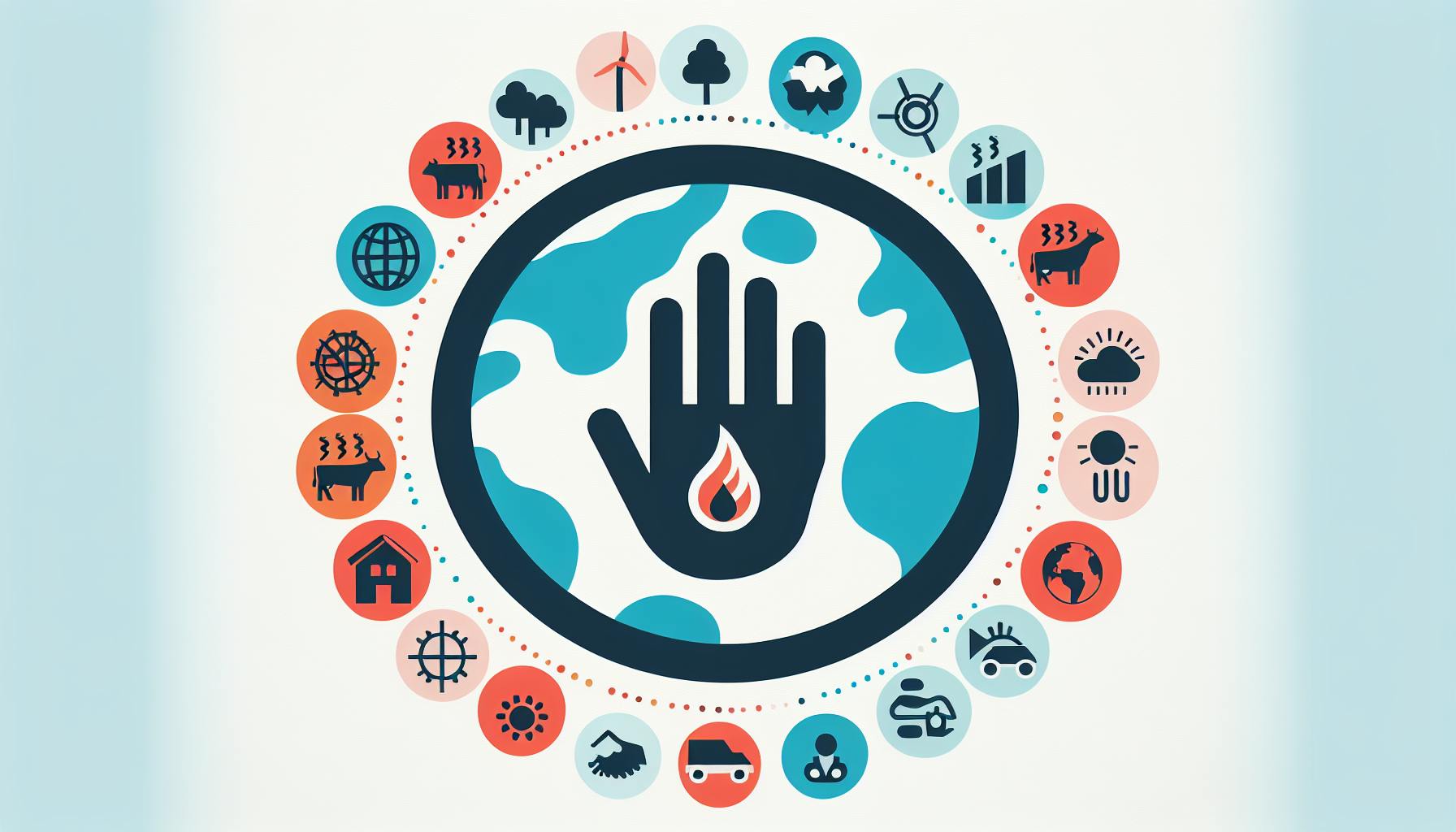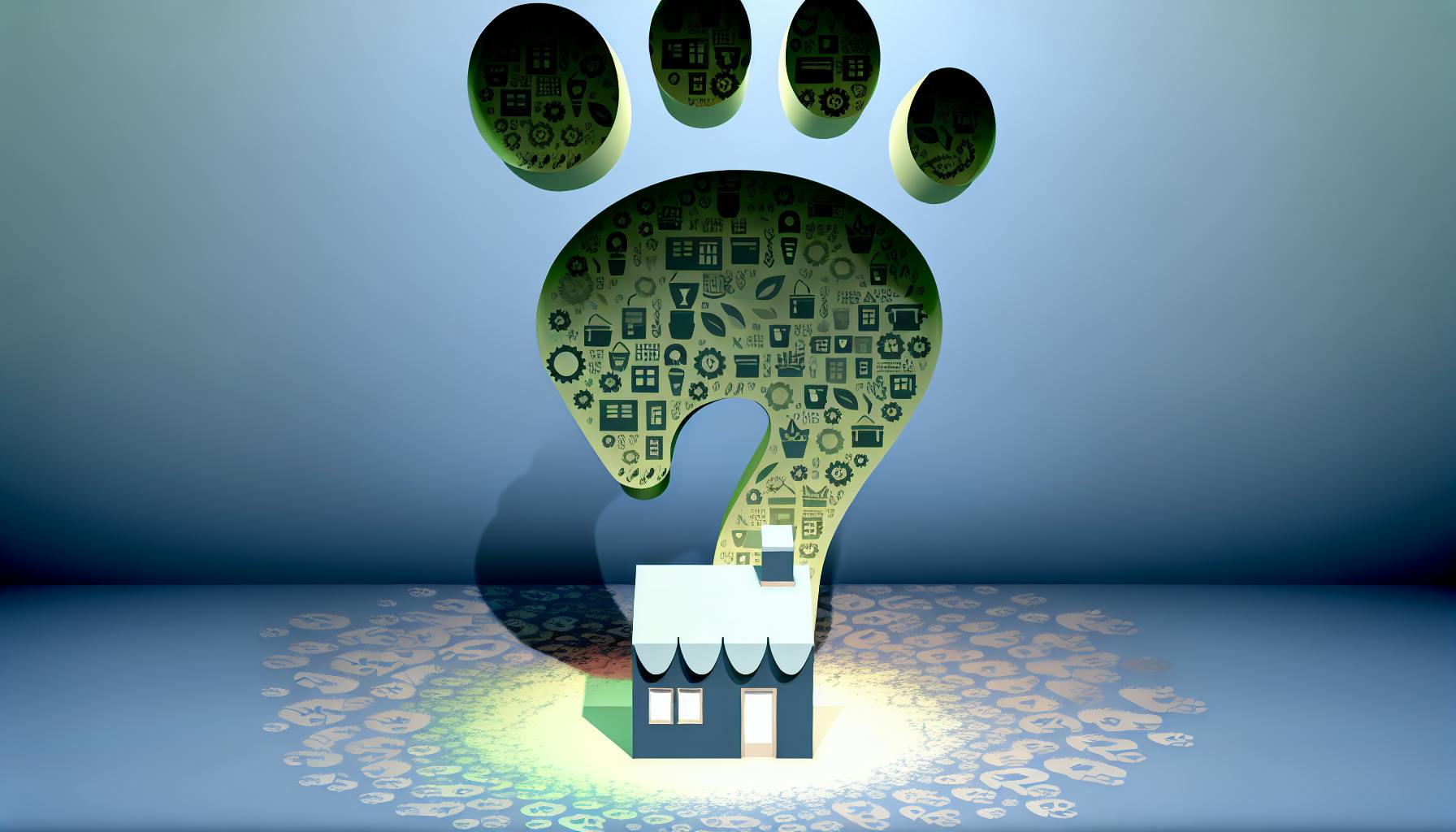Most organizations understand the importance of tracking greenhouse gas (GHG) emissions across scopes 1, 2, and 3.
By leveraging smart SaaS solutions, companies can streamline the entire process - achieving accuracy in emissions measurement and gaining actionable insights to drive strategic mitigation.
In this article, we will clarify the definitions of scope 1, 2 and 3 emissions, discuss the challenges involved, and explore how the right software tools can overcome these to enable sustainable growth.**
You will discover real-world examples of SMEs excelling in GHG management, and learn what features to look for when choosing your own emissions tracking SaaS.**
Harnessing SaaS for Effective Scope 1, 2 & 3 Emissions Management
An overview of the transformative role Smart SaaS solutions play in enabling SMEs to manage their scope 1, 2, and 3 GHG emissions with precision and ease.
Clarifying Scope 1, 2 & 3 GHG Emissions for SMEs
Scope 1 emissions refer to direct GHG emissions from owned or controlled sources. For SMEs, this could include emissions from company vehicles, on-site generators, refrigerants, etc.
Scope 2 accounts for indirect GHG emissions from the generation of purchased electricity, steam, heating and cooling consumed by the company.
Scope 3 emissions cover all other indirect emissions across an SME's value chain. This wide-ranging scope encompasses employee commuting, business travel, procurement, waste disposal etc.
Getting clarity on these emissions scopes is key for SMEs aiming to curb their carbon footprint. SaaS solutions can simplify this process significantly.
Navigating Challenges in Scope 1 & 2 Emissions Tracking
Tracking scope 1 and 2 emissions can be challenging for resource-constrained SMEs without sophisticated tracking mechanisms. Manual data collection across various facilities is cumbersome. Further, analyzing the data to generate insights requires specialized expertise.
SaaS solutions eliminate these pain points through:
- Automated data connectivity from various on-site sources
- Customized analytics revealing trends and improvement areas
- User-friendly visualization bringing clarity for business teams
With SaaS managing the heavy lifting, SME leadership can focus on emission reduction strategies.
Expanding Horizons: Understanding and Tracking Scope 3 Emissions
Getting a handle on scope 3 emissions is critical for SME climate action, yet the complex partner and supplier relationships make this daunting. SaaS solutions expand horizons by:
- Seamlessly integrating value chain emissions data from diverse sources
- Leveraging AI to derive actionable intelligence
- Contextualizing insights for different teams to inform decisions
Streamlining scope 3 emissions not only boosts an SME's net zero mission but also strengthens partner relationships.
Choosing the Right SaaS Solution for Scope 1, 2 & 3 Emissions
With carbon accounting responsibilities growing, SMEs need SaaS platforms that check all the boxes:
Accuracy From verifiable data sources to rigorous measurement methodologies.
Automation Minimal manual tracking through API integrations across the value chain.
Analytics Interactive dashboards that uncover trends and opportunities for stakeholder engagement.
Flexibility
Custom reporting formats catering to diverse disclosure needs.
By selecting SaaS partners strategically, SMEs can transform emissions management from a climate risk to a competitive edge.
What are scope 1 and scope 2 and 3 emissions?
Scope 1, 2 and 3 GHG emissions refer to the different classifications of greenhouse gas (GHG) emissions that a company generates through its operations and value chain. Understanding these classifications is key for organizations looking to measure, report on, and reduce their carbon footprint.
Scope 1 emissions cover direct GHG emissions from sources owned or controlled by the company. This includes emissions from fuel combustion in boilers, vehicles, and equipment, as well as fugitive emissions.
Scope 2 accounts for indirect GHG emissions from purchased electricity consumed by the company. Although the actual emissions occur at the power plant, they are attributed to the company consuming the electricity.
Scope 3 emissions encompass all other indirect emissions across a company's upstream and downstream value chains. Examples include purchased goods/services, transportation, waste disposal, employee commuting, investments, and product use. Scope 3 emissions are often significantly higher than Scope 1 and 2 emissions combined.
Reporting Scope 1, 2 and 3 emissions as per the Greenhouse Gas Protocol allows companies to fully account for their carbon footprint. This enables them to identify "hot spots", set science-based targets, engage stakeholders effectively around climate action, and make strategic decisions to achieve net-zero emissions. Integrating a smart SaaS solution can help organizations seamlessly collect, analyze and disclose emissions data across Scopes 1, 2 and 3.
What is the GHG Protocol definition of scope 1 2 and 3?
The Greenhouse Gas (GHG) Protocol provides the global standard for measuring greenhouse gas emissions from private and public sector operations. It categorizes emissions into three scopes:
- Scope 1 emissions are direct GHG emissions from sources owned or controlled by the company. This includes emissions from fuel combustion on site such as gas boilers, fleet vehicles, and air-conditioning leaks.
- Scope 2 emissions account for GHG emissions from the generation of purchased electricity consumed by the company. Purchased electricity is defined as electricity that is purchased or otherwise brought into the organizational boundary of the company. Scope 2 emissions physically occur at the facility where electricity is generated.
- Scope 3 emissions are indirect GHG emissions not covered in Scope 2 that occur in the value chain of the reporting company, including both upstream and downstream emissions. Scope 3 emissions could include transportation and distribution, purchased goods and services, waste disposal, etc.
Understanding the differences between Scope 1, 2, and 3 emissions is key for companies looking to calculate and report on their total greenhouse gas inventory. Proper categorization provides an overview of the various emission sources associated with operations and the related risks and opportunities to manage them.
What are scope 3 GHG emissions?
Scope 3 emissions refer to indirect greenhouse gas (GHG) emissions that occur in a company's value chain but are not directly controlled by the company. They represent the largest portion of most companies' carbon footprints.
Some examples of scope 3 emission sources include:
- Purchased goods and services
- Business travel
- Waste disposal
- Transportation and distribution
- Investments
- Leased assets and franchises
Accurately measuring scope 3 emissions can be challenging due to complex supply chains and lack of emission data from suppliers and partners. However, understanding scope 3 impact is crucial for companies aiming to reduce value chain emissions and achieve net-zero targets.
SaaS solutions like the EcoHedge platform can simplify scope 3 calculations by providing:
- Built-in emissions factors for various scope 3 categories
- Tools to collect supplier emission data
- Estimation models when supplier data is unavailable
- Visualization of hotspots to prioritize engagement
With smart SaaS technology, companies can streamline scope 3 tracking and focus their efforts on driving value chain decarbonization through supplier engagement and clean procurement strategies.
sbb-itb-919600f
How to reduce Scope 1 2 and 3 emissions?
Scope 1 2 and 3 greenhouse gas (GHG) emissions are all important parts of a business's sustainability journey. To reduce them, companies must employ strategies across their operations and value chain.
Conduct an emissions inventory
The first step is understanding where emissions come from. Conduct an emissions inventory using GHG accounting software or services to identify major emission sources. Automated tools can track scope 1 2 and 3 emissions, providing visibility into hotspots.
Implement operational initiatives
Scope 1 and 2 emissions originate from owned/controlled activities. Companies can reduce these direct emissions through operational efficiency, renewable energy, and decarbonization efforts like:
- Upgrading to more energy-efficient facilities, equipment, and fleets
- Installing on-site renewables like solar panels
- Switching heating, cooling, and production processes from fossil fuels to low-carbon alternatives
- Optimizing logistics to reduce transportation-related emissions
Engage the value chain
Scope 3 emissions come indirectly from business activities like procurement, outsourced operations, distribution, product use, and disposal. Work across the value chain to track and mitigate scope 3 emissions by:
- Surveying suppliers about their emission levels and collaborating on reductions
- Choosing sustainable materials and making low-impact design choices
- Using low-carbon transportation modes in distribution/logistics
- Promoting sustainable product use-phase behaviors
Offset unavoidable emissions
For emissions that cannot be fully eliminated with current technology, reputable carbon offsets help neutralize impact. Carefully select offset projects that demonstrably reduce or avoid GHG emissions.
Taking a multipronged approach across scopes and the value chain lets companies make real strides reducing total emissions on the path towards net zero. SaaS solutions can provide the insights needed to track progress and direct reduction efforts.
The Practicalities of Scope 1, 2 & 3 GHG Emissions Tracking with SaaS
Managing greenhouse gas (GHG) emissions across Scopes 1, 2, and 3 can be a complex undertaking for small and medium enterprises (SMEs). However, leveraging the right sustainability-focused SaaS solutions can significantly streamline the process.
Crucial SaaS Features for Scope 1 Emissions Tracking
Scope 1 covers direct GHG emissions from owned or controlled sources like company facilities and vehicles. Tracking these emissions accurately is crucial for sustainability reporting and establishing a baseline to drive future reductions.
Key SaaS capabilities that can simplify Scope 1 management include:
- Real-time emissions monitoring: Continuously pull emissions data from Internet of Things (IoT) sensors and building management systems into centralized dashboards. This eliminates manual data collection and provides real-time visibility.
- Automated calculations: Instantly calculate emissions using pre-loaded emissions factors as data streams into the platform. This removes the need for complex manual computations.
- Customizable visualizations: Visually track emissions via charts, graphs, and maps tailored to companies' operations. These provide actionable insights to guide reduction strategies.
- Mobility tracking integration: Connect fleet telematics systems to automatically log distances traveled and fuel consumed. This facilitates accurate emissions accounting from owned/leased vehicles.
- Alerting and notifications: Receive automated alerts when unexpected emissions spikes occur or reduction targets are at risk of being missed. This enables rapid corrective actions.
Harnessing SaaS Tools for Robust Scope 2 Emissions Management
Scope 2 emissions stem from purchased electricity, steam, heating, and cooling. While indirect, these emissions are substantial for many SMEs but can be challenging to measure.
SaaS solutions can empower robust Scope 2 management through:
- Automated data ingestion: Seamlessly pull supplier-provided emissions factors and energy consumption data into the platform. This removes manual importing and calculations.
- Location-based tracking: Map emissions geographically based on operation sites to identify facility-level reduction opportunities.
- Forecasting and scenarios: Run emissions projections and test reduction scenarios like renewable energy procurement. This aids future planning and strategy setting.
- Supplier engagement features: Access built-in tools to survey suppliers on energy mix and emissions reporting capabilities. This facilitates supply chain transparency and collaboration.
- Impact visualizations: View dashboards that clearly illustrate the environmental impacts from scope 2 emissions such as equivalencies in number of combustible engines used per year. This connects data to tangible meaning.
Advanced SaaS Analytics for Scope 3 Emissions Insight
Encompassing all indirect emissions across the upstream and downstream value chain, Scope 3 emissions account for the greatest share of total emissions for many SMEs. SaaS solutions can tame the complexity through:
- Value chain mapping: Visualize all relevant Scope 3 categories based on the company's operations. This gives clear focus on the most significant sources to address.
- Built-in emissions factors: Pull from extensive databases of emissions factors for diverse economic sectors and activities to enable accurate category-level calculations.
- Supplier engagement functionality: Access integrated tools to distribute emissions reporting surveys and guidance to suppliers for quality upstream data collection.
- Custom goal setting: Define multi-tier reduction targets specific to each Scope 3 category. This drives purposeful performance management.
- Impact modelling dashboards: Run scenario analyses to project ripple effect outcomes from interventions across different hotspots. This empowers data-backed decision making on the most impactful abatement measures.
With their extensive analytics capabilities and ease-of-use, SaaS solutions can empower SMEs to overcome Scope 3 complexity, meeting stakeholder expectations for value chain decarbonization. Tackling GHG emissions in a credible and pragmatic way is crucial on the net zero journey - innovative SaaS tools are primed to accelerate that progress.
Case Studies: SMEs Excelling in Scope 1, 2 & 3 GHG Emissions Mitigation
Presenting real-world success stories that highlight the efficacy of SaaS platforms in managing and reducing GHG emissions across all scopes.
Streamlining Scope 1 Emissions: An SME Success Story
Eco-conscious Construction Co., a small construction company focused on sustainable building practices, struggled with tracking its scope 1 emissions from direct sources like vehicle fuel usage. The complex calculations and reporting procedures were manually intensive, prone to inaccuracies, and took resources away from core operations.
By implementing EcoHedge Lifecycle, Eco-conscious Construction was able to seamlessly log fuel purchases, mileage, and associated emissions. Customized analytics dashboards delivered real-time insights into the company's carbon footprint, allowing them to pinpoint heavy emitting activities and adjust practices to drive further reductions.
Over the first year using the SaaS solution, the company reduced scope 1 emissions by 12% while also saving $8,400 in fuel costs. The automated and simplified emissions tracking improved accuracy and freed up personnel to focus on other initiatives.
Achieving Scope 2 Emissions Transparency with SaaS
As a small marketing agency with net-zero aspirations, Green Marketing LLC needed full visibility into its scope 2 emissions stemming from purchased electricity. However, the task of collecting usage data, applying appropriate emissions factors, and generating comprehensive reports was incredibly arduous without specialized software.
By onboarding EcoHedge's streamlined SaaS platform, Green Marketing established automated data integrations with its utility providers to seamlessly log monthly electricity consumption. Customized analytics features provided actionable insights to guide the agency's renewable energy procurement strategy.
Within one year of implementation, the agency increased its use of clean power by 42%, with scope 2 emissions decreasing by over 30%. The user-friendly SaaS solution delivered the desired emissions transparency while saving Green Marketing $15,000 in auditing and consulting fees.
Innovative Approaches to Scope 3 Emissions by SMEs
As an eCommerce company specializing in eco-friendly consumer products, GreenShop needed to account for and mitigate emissions from its expansive upstream and downstream value chain activities. However, assessing and influencing scope 3 emissions posed a significant challenge.
By engaging stakeholders through EcoHedge Engage and collecting supplier data via EcoHedge Lifecycle, GreenShop mapped over 80% of its scope 3 footprint within months. Leveraging these SaaS tools, the company enacted supplier emissions reduction incentives, a customer carbon offset program, and a worker education campaign.
In just two years, GreenShop reduced total scope 3 emissions by 25% by innovatively applying SaaS solutions to engage partners and enable data-driven action. The company is now an industry leader in sustainable operations and stakeholder transparency.
Navigating the Future: Sustainable Growth with Scope 1, 2 & 3 GHG Emissions Control
As small and medium enterprises (SMEs) increasingly prioritize sustainability, effectively measuring and managing greenhouse gas (GHG) emissions has become pivotal. Breaking down emissions tracking into Scope 1, Scope 2, and Scope 3 designations as per the Greenhouse Gas Protocol provides vital clarity.
Software-as-a-Service (SaaS) solutions can greatly streamline this process through automated carbon accounting. By seamlessly integrating emissions data collection and analysis into day-to-day operations, they empower SMEs to not only comply with evolving regulations, but also unlock new opportunities for sustainable growth.
Key Takeaways
- Scope 1 covers direct emissions from owned or controlled sources like facilities and vehicles. Scope 2 tracks indirect emissions from purchased electricity and heat. Scope 3, the broadest category, accounts for all other indirect emissions across the value chain.
- Managing Scope 1, 2 and 3 emissions is complex, but essential for comprehensive environmental reporting. Non-compliance can damage reputation and investor relations.
- Specialized SaaS solutions eliminate manual data collection and complex calculations through automated tracking and analytics. They provide real-time insights to inform strategic carbon reduction.
- Beyond compliance, sustainability leadership can spur innovation, enhance branding, and provide competitive edge by meeting rising customer and stakeholder expectations.
By leveraging user-friendly SaaS emissions management systems, SMEs can overcome resource limitations, minimize business risks, and discover new opportunities on their sustainability journey. The path ahead requires resilient solutions that grow with enterprises striving for excellence.



